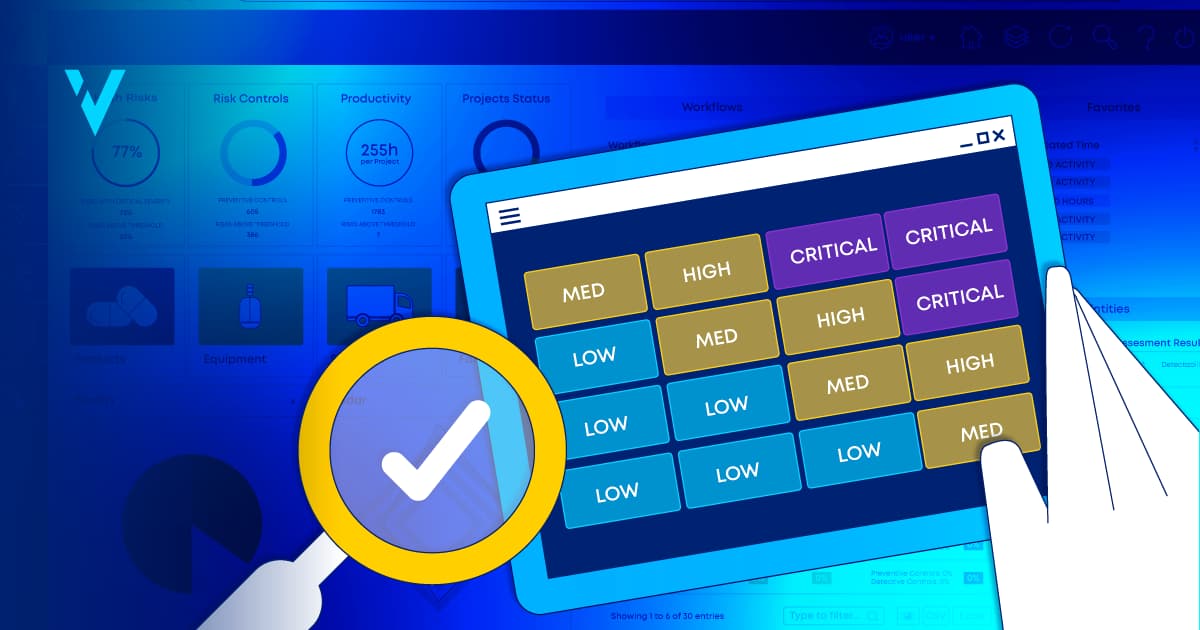The ICH Q9(R1) guideline on Quality Risk Management (QRM) is on its way to reaching Step 5 of the ICH process around the globe. As you can see, a large part of the world has already implemented it, while the rest plans to do so within the next few months:
- ANVISA, Brazil-In the process of implementation; Date: August 1, 2023.
- EC, Europe-In the process of implementation; Date: July 26, 2023.
- FDA, United States-Implemented; Date: May 4, 2023.
- Health Canada, Canada-In the process of implementation.
- MFDS, Republic of Korea-Not yet implemented; Date: December 1, 2023.
- MHRA, UK-Implemented.
- Swissmedic, Switzerland-Implemented; Date: January 18, 2023.
In this blog post, we'll explore what steps you need to take to comply with the new revision.
What is this revision all about?
The ICH Q9 guideline provides guidance on the principles and examples of tools for quality risk management that can be applied to various aspects of pharmaceutical quality.
Initially implemented in 2006, ICH Q9 has been due for a revision that would tackle aspects left out of the original document.
Thus, the revision addresses four fundamental areas:
- Lack of understanding as to what constitutes formality in QRM work.
- Reducing the high levels of subjectivity in risk assessments and QRM outputs.
- Management of end-product availability risks.
- Lack of clarity on risk-based decision-making.
Clarifying formality in QRM
Quality risk management activities will have different degrees of formality depending on certain factors, such as:
- Uncertainty - lack of knowledge about hazards, harms, and, consequently, their associated risks.
- Importance - risk-based decision importance in relation to product quality.
- Complexity - the degree of complexity associated with the process or subject area.
Higher levels of uncertainty, importance, or complexity may require more formal quality risk management approaches to manage potential risks and support effective risk-based decision-making.
| Characteristics | Lower levels of formality | Higher levels of formality |
| QRM process | One or more parts of the process are not performed as stand-alone activities but are addressed within other elements of the quality system. | All parts are explicitly performed. |
| QRM tools | QRM tools might not be used in some or all parts of the process. | QRM tools are used in some or all parts of the process. |
| Team involved | A cross-functional team might not be necessary. | A cross-functional team is assembled for the QRM activity. |
| Facilitator | --- | Use of a facilitator with experience and knowledge of the quality risk management process may be integral to a higher formality process. |
| Reporting | Stand-alone quality risk management reports might not be generated. The outcome of the quality risk management process is usually documented in the relevant parts of the quality system. | Stand-alone quality risk management reports or related documents which address all aspects of the process may be generated and documented (e.g., within the quality system). |
Additionally, while importance and complexity are relatively straightforward to identify, uncertainty can be managed, up to a point, with a systematic approach for acquiring, analyzing, storing, and disseminating scientific information, which, in turn, will inform all QRM activities.
Therefore, at ValGenesis, we recommend setting up a system to perform this knowledge management to guarantee a better assessment of proper formality.
Minimizing subjectivity in risk assessments
Connected to the previous point, there's the aspect of subjectivity in risk assessments.
Subjectivity can impact every stage of a quality risk management process, especially the identification of hazards and the estimation of the probability of occurrence and severity of harm. It can also impact the estimation of risk reduction and the effectiveness of decisions made from quality risk management activities. Subjectivity cannot be eliminated entirely, but it can be minimized by addressing bias and assumptions.
At ValGenesis, we recommend the following:
- Using software that can make risk management activities systematic. And more than systematic, it needs to streamline the risk operations of the entire organization.
- Installing a system that aggregates all the manufacturing data, processes it, and informs your QRM system of the real impact of your QRM activities.
By enabling this virtuous circle, you can make QRM decisions that are both science- and knowledge-based, thus less subjective.
Managing product availability risks
Quality and manufacturing issues can lead to product availability issues (e.g., product shortages).
ICH Q9(R1) identifies that, in order to proactively identify and implement preventive measures that support product availability, QRM activities should include the following factors:
- Manufacturing process variability and state of control
- Manufacturing facilities and equipment
- Oversight of outsourced activities and suppliers
Clarifying risk-based decision-making
Risk-based decision-making is implied in all quality risk management activities.In the case of QRM activities, they include decisions related to:
- What hazards exist.
- The risks associated with those hazards.
- The risk controls required.
- The acceptability of the residual risk after risk controls.
- The communication and review of quality risk management activities and outputs.
ICH Q9(R1) predicts three approaches to risk-based decision-making. The approaches are:
- Highly structured: involves a formal analysis of the available options before making a decision and an in-depth consideration of relevant factors associated with the available options.
- Less structured: simpler approaches are used to arrive at decisions, and they primarily use existing knowledge to support an assessment of hazards, risks, and any required risk controls.
- Rule-based: standardized approaches, which do not require a new risk assessment to make such decisions, are typically based on previous risk assessments, which usually lead to predetermined actions and expected outcomes.
These approaches are adopted based on different levels of formality, which, in turn, are based on their levels of importance, complexity, and uncertainty of each decision.
| High importance | Low importance | |||
| Low complexity | High complexity | Low complexity | High complexity | |
| Low uncertainty | Less structured | Highly structured | Less structured | Highly structured |
| High uncertainty | Highly structured | Highly structured | Highly structured | Highly structured |
ValGenesis can ensure your ICH Q9(R1) compliance
The ValGenesis consulting services team comprises industry experts who thoroughly understand the global regulations that impact life sciences businesses.
Whether you have completed implementing the revision or are starting now, we are ready to assess and guarantee your processes' ICH Q9(R1) compliance. You can learn more by reaching out to our experts.


